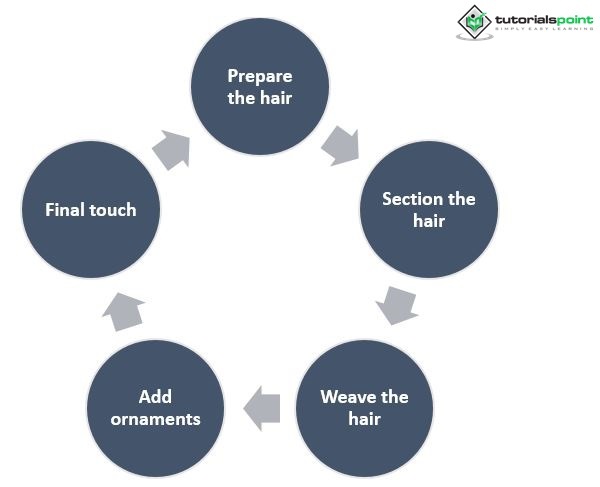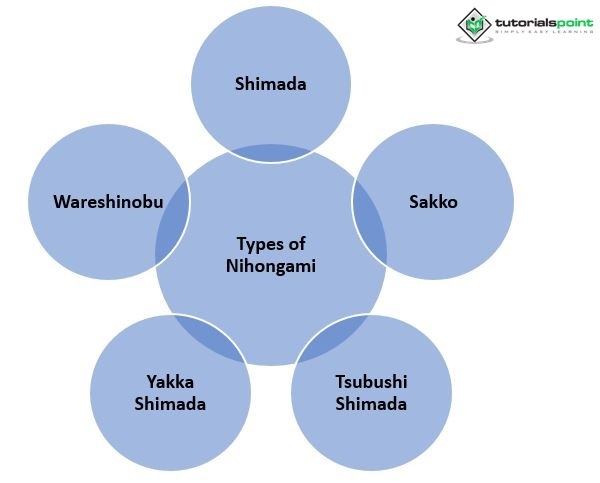

Nihongami is a traditional Japanese hairstyle that has been worn by women for centuries. It is characterised by intricate arrangements of hair, often adorned with ornamental hairpins and other accessories. Nihongami is typically worn on special occasions, such as weddings and tea ceremonies, and is often styled to complement the wearer's kimono.

The history of Nihongami dates back to the 7th century in Japan, when women began styling their hair in elaborate arrangements. Over the centuries, these hairstyles evolved to become increasingly intricate and stylized, with different styles emerging to represent different regions and social classes. Nihongami hairstyles were often worn by geisha and other women in the entertainment industry, as well as by women of noble birth.
Today, Nihongami continues to be a popular hairstyle for special occasions in Japan, and many young women are learning the art of Nihongami in order to preserve this important cultural tradition.
Nihongami has been an important aspect of Japanese culture for centuries, and it is considered to be a symbol of beauty, elegance, and grace. The hairstyles are often quite complex and can involve weaving and twisting the hair into intricate patterns that are held in place with hairpins and other accessories. The hairstyles are typically adorned with decorative ornaments such as flowers, ribbons, and combs, which are chosen to complement the style of the wearer's kimono. Nihongami is still a popular choice for special occasions in Japan, such as weddings, tea ceremonies, and other formal events. Many women today are learning the art of Nihongami in order to preserve this important cultural tradition and pass it on to future generations.
Nihongami has a deep significance and meaning in Japanese culture. The intricate and stylized hairstyles are not only a symbol of beauty and elegance, but they also represent cultural and social status. In the past, Nihongami hairstyles were worn by women of noble birth and were considered a sign of their high social status. The hairstyles were also worn by geisha and other women in the entertainment industry, who used Nihongami to enhance their beauty and femininity.
The ornaments and accessories used in Nihongami hairstyles also hold significant cultural and symbolic meaning. For example, cherry blossoms are often used to symbolise renewal and the impermanence of life, while peonies are a symbol of wealth and prosperity. The use of specific ornaments and accessories in Nihongami is carefully chosen to complement the wearer's kimono and to convey a specific message or meaning.
Overall, Nihongami is an important part of Japanese culture and history, and it continues to be a popular and meaningful hairstyle for special occasions in Japan today.
Tying a Nihongami hairstyle can be a complex process that requires some skill and practice. Here is a simplified step-by-step guide for creating a basic Shimada-style Nihongami −
Start by brushing the hair thoroughly and gathering it into a ponytail at the back of the head.
Twist the ponytail tightly, then wrap it around the base to create a bun. Secure the bun with hairpins or kanzashi (ornamental hairpins).
Use additional hairpins to create an intricate pattern around the bun, arranging them in a symmetrical and aesthetically pleasing way.
Add decorative accessories such as kanzashi, combs, or flowers to the hairpins, being careful not to overload the hairstyle.
Apply a small amount of hairspray or hair wax to hold the hairstyle in place and smooth down any flyaway hairs.
Keep in mind that Nihongami hairstyles can be quite intricate and may require the assistance of a professional hairstylist or someone with experience in creating traditional Japanese hairstyles. It's important to be patient and take your time to ensure that the hairstyle is symmetrical and well-balanced.
Setting a Nihongami hairstyle can be quite complex and time-consuming, and it typically requires the assistance of a professional hairstylist. Here is a general overview of the steps involved in setting a Nihongami hairstyle −
Prepare the Hair − The hair is washed, dried, and brushed to remove tangles and knots.
Section the Hair − The hair is divided into sections, which are then twisted and secured with hairpins.
Weave the Hair − The hairstylist weaves the twisted sections of hair together, creating intricate patterns that are held in place with hairpins and other accessories.
Add Ornaments − Decorative ornaments such as flowers, ribbons, and combs are added to the hairstyle, chosen to complement the style of the wearer's kimono.
Final Touches − The hairstylist makes any final adjustments to the hairstyle and ensures that it is secure and comfortable for the wearer.

It's important to note that setting a Nihongami hairstyle is a highly specialised skill, and it can take years of practice to master the art. If you're interested in wearing a Nihongami hairstyle for a special occasion, it's best to seek the assistance of a professional hairstylist with experience in traditional Japanese hairstyles.
There are several variations of Nihongami hairstyles, each with their own unique features and cultural significance. Here are a few examples −
Shimada − This is one of the most famous and iconic Nihongami hairstyles, characterised by a high bun at the back of the head and hairpins and ornaments arranged in intricate patterns.
Sakko − This is a more natural-looking Nihongami style, with hair arranged in a low bun or ponytail at the nape of the neck and adorned with simple, elegant accessories.
Tsubushi Shimada − This is a variation of the Shimada hairstyle, but with a more subdued and natural appearance, achieved by flattening the hair around the bun.
Yakko Shimada − This is a Shimada-style hairstyle, but with the hair pulled forward over the forehead and styled into a small bun or ponytail.

Wareshinobu − This is a simple and elegant Nihongami style, characterised by a low bun at the nape of the neck and decorated with a single ornamental comb.
These are just a few examples of the many variations of Nihongami hairstyles, each with their own unique features and cultural significance. The choice of hairstyle often depends on the occasion, the wearer's social status, and the style of their kimono.
Nihongami is a traditional Japanese hairstyle that has been passed down through the generations and remains an important part of Japanese culture today. There are various types of Nihongami hairstyles, each with its own unique features and cultural significance, which are often chosen based on the occasion and the wearer's social status. Despite the changing times, Nihongami continues to be a revered art form and a symbol of Japanese cultural heritage.